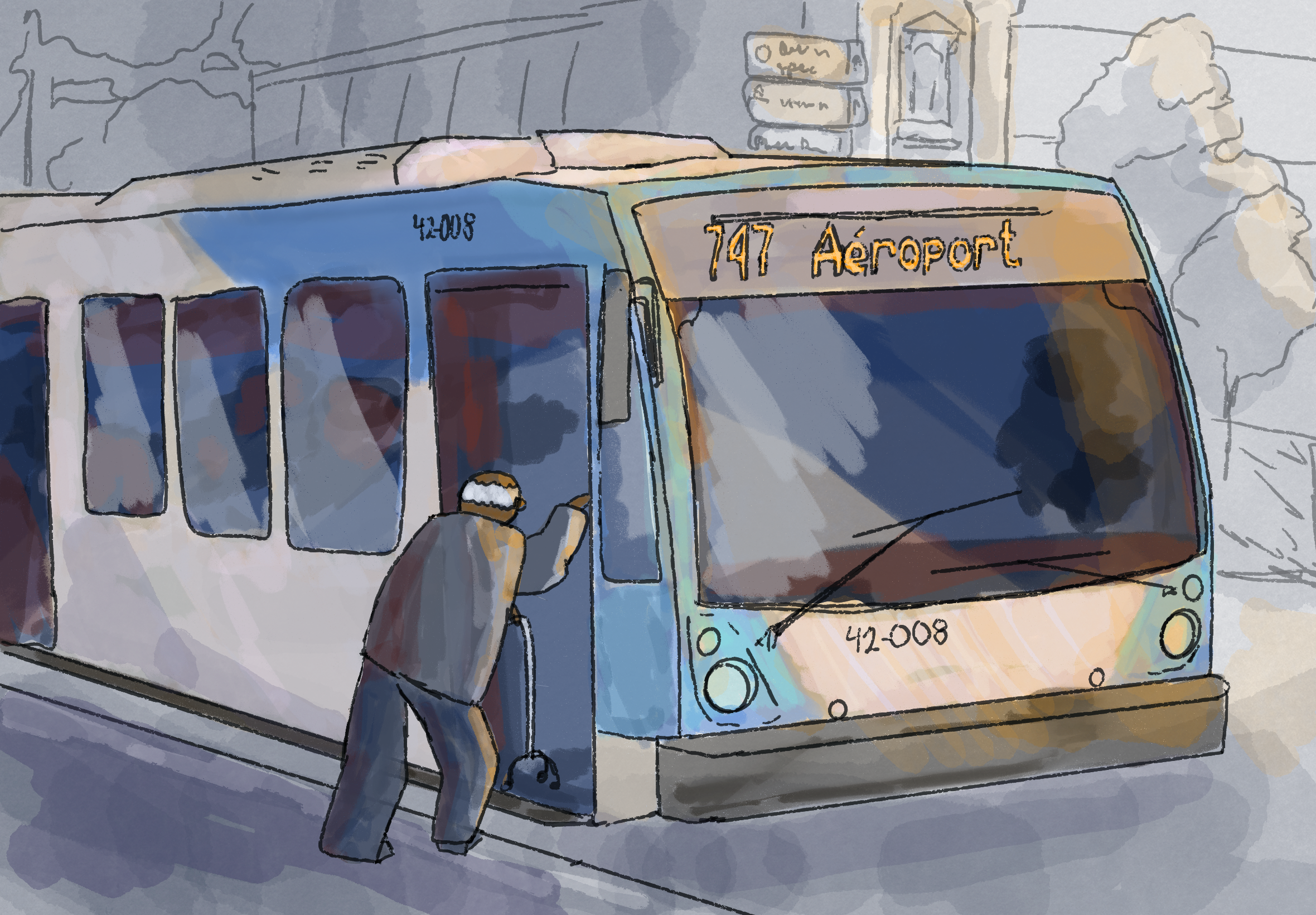A city’s public transit system should serve the needs of all its inhabitants and leave no citizen behind. However, many older adults living in Canadian cities are reluctant to use these services, relying on their cars instead.
Meredith Alousi-Jones, a PhD candidate in McGill’s School of Urban Planning, and her collaborators investigated the barriers preventing older adults—those aged 65 years and above—from using public transit. This research was conducted as part of the Aging in Place Challenge program, which aims to help aging populations thrive in their own homes and communities—an alternative that many prefer to nursing home care.
“Older adults are a segment of the population that is typically less studied in research, especially concerning transit,” Alousi-Jones said in an interview with The Tribune. “We know that it is a growing population.”
Their study surveyed residents across six Canadian cities—Montreal, Toronto, Vancouver, Victoria, Saskatoon, and Halifax—encompassing a wide range of urban contexts, from metropolises to smaller urban areas.
“The gap that [the study] was trying to address is mainly from a policy point of view of giving some tips to the agencies in each of the six research contexts,” Alousi-Jones said.
To form targeted initiatives for public transport agencies, the researchers grouped people who avoid public transit into four categories: Non-users who are transit-inclined, those who use it as a last resort, those who are not considering it for now, and those who are transit-averse.
They found that many older adults do not use public transit simply because it often fails to meet their day-to-day requirements.
“It is not a mode [of transport] that suits their needs,” Alousi-Jones elaborated. “A lot of them, especially in the more rural areas, like the suburbs or even smaller cities, where public transit is not as expansive over the territory, do not find that it is efficient, do not find that they can carry groceries easily, or things like that.”
A lack of knowledge about how to use public transport also deters many, especially those who are new to a city or unfamiliar with its transportation system. Among the 491 survey respondents, many cited poor reliability and discomfort as key concerns. Alousi-Jones highlighted that reliability, comfort, and access to information on how to use public transit are solutions readily actionable by public transport agencies.
“Things like adequate seating and seating at bus stops were common suggestions from our respondents for how they could use public transit a bit more,” Alousi-Jones said.
The researchers noted differences in survey answers between cities. For instance, non-users from larger cities—Montreal, Toronto, and Vancouver—wanted transit services to run more frequently, while people in Saskatoon, a colder city, demanded more bus shelters for comfort while waiting.
While older adults in Montreal appreciated free fares, the researchers noted that this measure did not necessarily incentivize them to use public transit.
Taking the results together, Alousi-Jones’ main recommendation was to make transit more accessible by improving the reliability and proximity of public transportation services.
“A lot of older people do not necessarily have the physical ability or the desire to walk a long time to get to transit, so they do not mind transferring as much as [one] would think,” Alousi-Jones said. “They do not care if they have to go from a bus to a metro or so on, as long as the bus is reliable and it is close to their house.”
Alousi-Jones stressed that her recommendations would not only benefit older adults but also other users in the population. She presented her research to public transit agencies across the six cities to ensure that her results were communicated to the right decision-makers.
“The [cities] really want to make sure that the transit is well adapted to their needs,” Alousi-Jones observed. Moving forward, Alousi-Jones now studies how to improve satisfaction among current transit users, as well as the barriers that prevent them from using it more frequently. She believes that public transit may improve if it is treated as an essential service that enhances life quality as opposed to a money-generating service. Applying this philosophy will not only enhance people’s well-being as they age but will also contribute to achieving Canada’s net-zero emission target by encouraging people to choose low-emission car alternatives.






